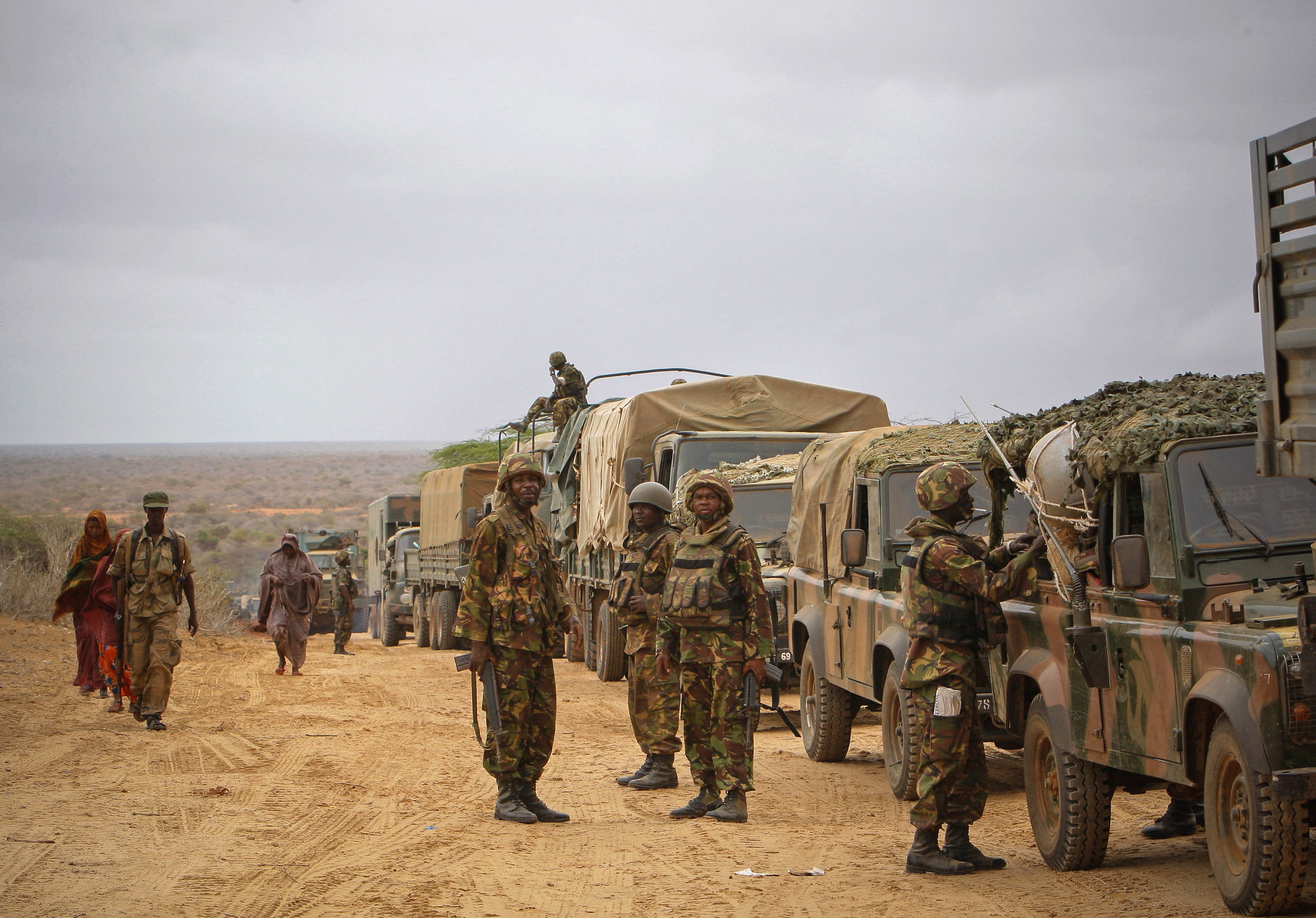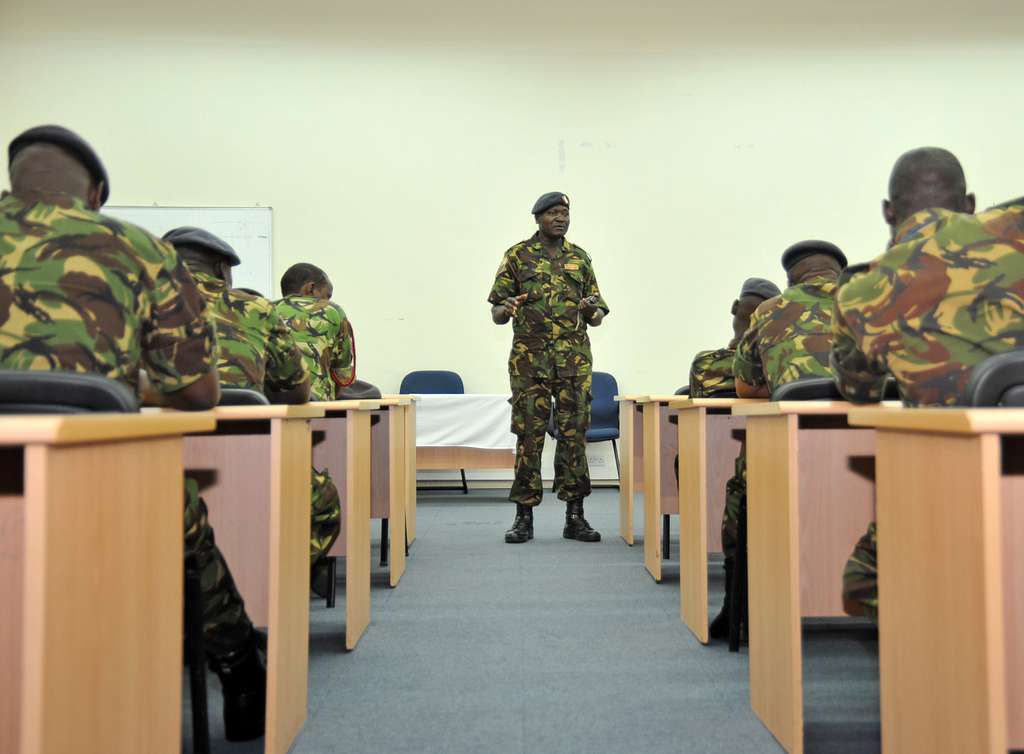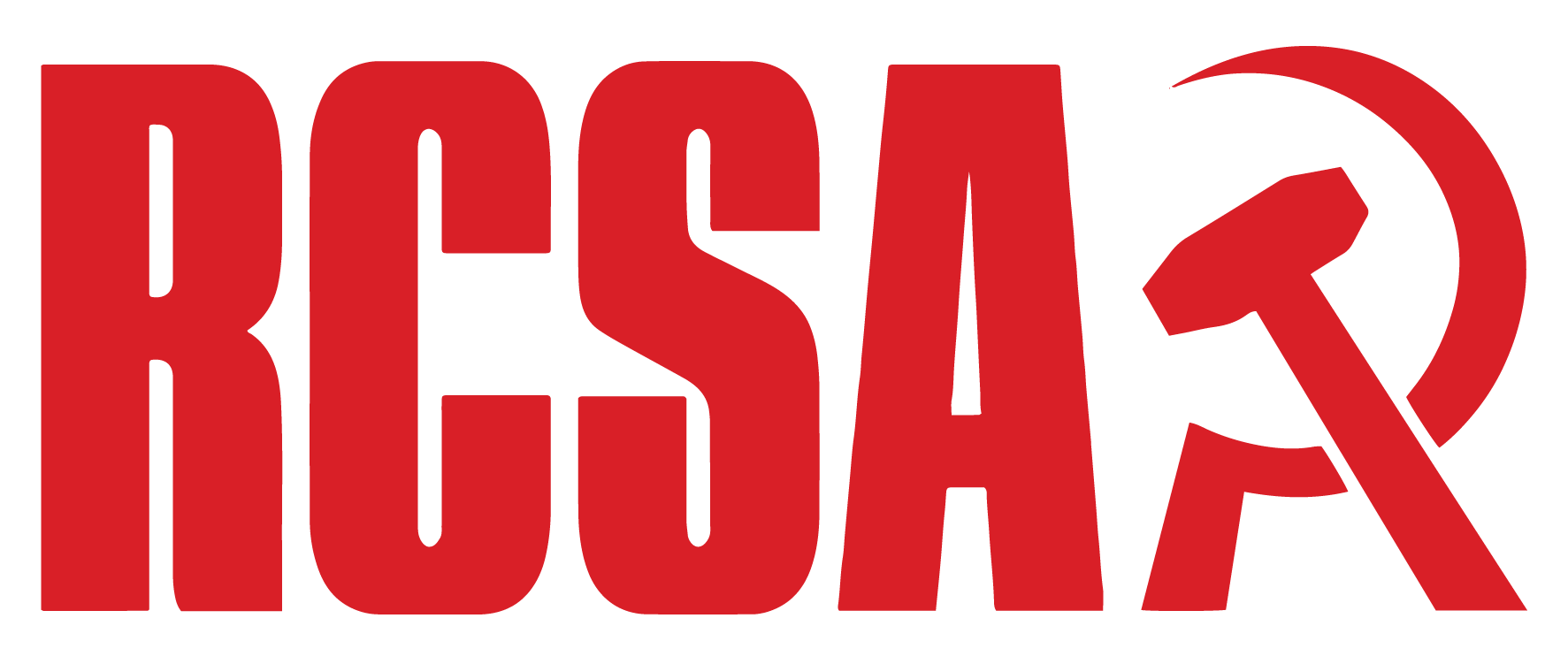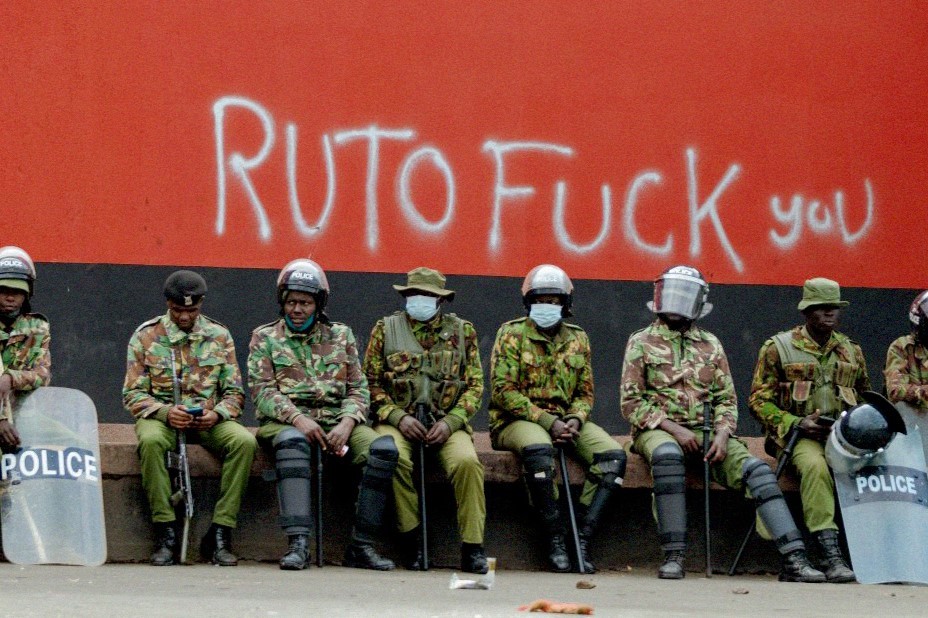[Originally published at marxist.com]
Ben Curry, 03 July 2025
On 25 June, the youth erupted once more onto Kenya’s streets. One year to the day after the struggle to stop Ruto’s Finance Bill 2024 culminated in spectacular scenes of the youth overrunning the parliament building, Gen Z is on the move again. The movement has picked up where it left off. But this time, the mood is darker and angrier.
Last year, the question that raised the youth to their feet in the maandamano (‘protest’) was Finance Bill 2024, then passing through parliament. That brutal bill, introduced by Ruto at the behest of the IMF, would have wrung Kenya’s poorest dry in order to pay for the enormous and growing state debt. The aim of the protests was to occupy parliament and to stop the passage of that legislation.
In that, the movement achieved its aim.
The masses could not remain mobilised indefinitely. They withdrew from the streets, but for a year, anger has continued to bubble away. The revolution lives on. It had to draw breath and wait for a chance to reemerge, which it did on the anniversary, 25 June, picking up exactly where it left off. This time, the aim wasn’t to #OccupyParliament to stop a piece of legislation. It was to #OccupyStateHouse, the president’s residence, and to cut the head off the regime.
Down with the regime!
As the youth have returned to the streets, the main slogans being raised are no longer about Finance Bill 2024, nor even Finance Bill 2025. There is one slogan on everyone’s lips: Ruto must go.
The same class anger against the brutal austerity and regressive taxes that brought the people to their feet last year still infuses the movement, however. The last year has, if anything, deepend it. We predicted last summer that the government would return to the unresolved question of the budget deficit after the scrapping of the Finance Bill, and that they would find other, more underhanded ways to plug it.
This is exactly what they have done, with cuts to all ministries.
Cuts to the Ministry of Health have seen 8,000 nurses, lab technicians and clinical officers sacked, wages withheld, and services closed. In March, before the youth maandamano erupted once more, thousands of healthcare workers were on the streets. It was their turn to inhale the tear gas of the regime.
In education, food programmes for 4.5 million of the poorest learners have been withdrawn. Tens of thousands of teaching places remain unfilled. University funding has been slashed by a third. The future of the young generation is being erased one school place at a time.
Even the army has been affected, with food subsidies for soldiers scrapped in order to save a meagre US$23 million. We will have more to say on the consequences of that budget cut later…
But, no, the main goal of these protests has moved on from simply stopping a piece of legislation. It has moved on to the removal of a regime, which is dripping from head to foot with the blood of martyred youth.
Dripping with blood
For readers who are not familiar with the brutality of this regime, we will retell some of the horror stories.
Dozens were murdered last year. Many of the bodies of the movement’s martyrs were never recovered by their families. What happened to their bodies?
Coinciding with last year’s maandamano, dozens of corpses, dismembered and in sacks, were discovered at the Kware dumpsite, 100 metres from a police station. The media talked about a serial murderer, the ‘Vampire Killer’. But the authorities weren’t overly eager to uncover the truth. They impeded any investigation at the dumpsite. Then, quite miraculously, they arrested a suspected ‘serial killer’ in just three days. The man confessed, only to recant, claiming his confession was extracted under torture. Then, as quickly as he was apprehended, the suspect suddenly ‘escaped’ from police custody.
Whose bodies were these? Which serial killer killed them? The ‘Vampire Killer’, or the better-known serial-killers-at-large: William Ruto and his police thugs?
More recently, just a few weeks before the wave of protests on 25 June this year, a young man named Albert Ojwang was arrested for words expressed online that were not to the liking of the regime. He died in police custody with clear signs of torture on his body. The CCTV footage was erased, and a technician confessed that he had been paid KSh 3,000 to erase it.
At the protest demanding justice for Albert Ojwang, another man, Boniface Kariuki, a 31-year-old street vendor, was shot in the head at point-blank range. He is now brain dead.
This is a regime of killers, and the first goal of the youth is to bring it down. The experience of the last year has taught the young people of Kenya to expect nothing but tear gas and bullets from this regime. And yet they went out regardless, fully prepared to face death. In their social media videos, recorded before they hit the streets, young people asked for only a dignified burial should they fail to return home.
16 more of these brave young men and women never returned home on Wednesday 25 June.
There is no longer any concession from the top that can conceivably satisfy the millions of youth who have participated in the maandamano. Only the downfall of the regime will do.
But this poses two vital questions before the youth: firstly, how can Ruto be brought down? And secondly, what will replace him?
How can Ruto be overthrown?
The youth are searching for the answer to these very questions. The main hashtag accompanying last Wednesday’s protest, which became one of the world’s most retweeted, reflects this searching: #SiriNiNumbers – ‘The Secret is Numbers’.
To give the youth their due, the use of social media has allowed them to intelligently avoid co-option. Pompous opportunists like Kasmuel, who tried to claim they were ‘leaders’ of the movement, have been laughed off stage. Meanwhile, the main opposition party, Raila Odinga’s ODM, has found itself impotent to alter the course of events. It has been unmasked and forced to huddle in fear behind Ruto’s boot.
Last summer, when mass opposition to the Finance Bill erupted, Odinga tried to pose as its voice in parliament. He denounced the Finance Bill. But when he saw that the masses were not to be fooled by his faux opposition, he quickly realised he had as much to lose as Ruto if the revolution proved victorious. It would surely sweep away the whole establishment, himself included.
Since then, he has entered into an ever-closer alliance with Ruto in an attempt to stabilise the situation. And on Wednesday 25 June, where was he to be found? Sitting solemnly next to Ruto at the same funeral in Kilifi, while the nation’s youth were being shot dead in the streets. Since last year, the last drop of legitimacy has drained not just from Ruto, but from Odinga and his gang too.
This was the strong side of social media. But now, something else is needed. The movement, ‘partyless and fearless’, has discarded all the rotten leaderships on offer from the official opposition. But the answer to bad leadership is not no leadership but good leadership, loyal to and responsive to the needs of the movement.
How can this be formed? Only by organising the movement.
Last year, we advanced the idea of forming committees of action in every workplace, school and community. Doing so would unlock enormous, as yet untapped revolutionary potential.
Peaceful protests are regularly being met by unbridled state violence. The violence of the state must be met with the organised self-defence of the masses. Self-defence committees could root out agent provocateurs and deal swiftly with government goons.
But most important of all, such organisation would also allow the movement to expand, drawing in those vital numbers. Between each maandamano, Kenya has experienced sporadic mass movements by different layers, such as workers in the healthcare and education sectors. By forming a national leadership organically drawn from the committees, an appeal could be addressed to these layers, inscribing their demands on the revolution’s banner, and calling on them to send their own delegates to the committees.
The working class must be drawn in as an organised force, with its own formidable weapon: the general strike. Not a wheel turns, not a phone rings, not a lightbulb shines without the kind permission of the working class. If the workers struck, Kenyan society and the state machine would seize up. The regime would be paralysed, only able to await its denouement.
But for that, a force capable of striking the regime dead must be organised. At a certain stage, the movement must face up to the fact that force can only be overthrown by force.
The question of the army
The question of the attitude of the army must become a decisive one at a certain stage. Whose side are they on?
The ruling class are aware of the importance of this question. Back in March, Raila Odinga made the sensational claim that he had personally intervened last summer during the maandamano to prevent the military from stepping in and removing Ruto.

Though it was rubbished as an ‘unpatriotic’ claim, there was nothing implausible about it. The movement took on threatening proportions. But it had no leadership that could replace the regime. It could storm parliament, but then what? It had no ‘government-in-waiting’. It had no arms with which to secure its victory. The next step was merely to vacate parliament.
Nevertheless, its menacing figure struck fright into the hearts of the rulers. There must have been many nervous generals, both then and now. The movement threatens to sweep away not just Ruto but the whole regime.
Of course, the attempts since last week by regime loyalists to smear the maandamano as an ‘attempted coup’ are filthy lies. But as long as it is unclear what the masses want to replace Ruto with, and by what means they might do so, then the main danger from Ruto’s perspective comes not from the movement as such but from the Kenya Defence Forces (KDF).
If the mass movement exhausts the police, the last line of defence for the regime will be the army. But throwing the army into the fray would mean asking ordinary soldiers to shoot on their brothers and sisters. Many would refuse to comply, and this would threaten to split the army down the middle. At that point, to save their authority, the senior officers might sacrifice Ruto to save the regime as a whole, as they did in Sudan in 2019.
Is it merely a coincidence that, in the week since the youth hit the streets again, Ruto has made a raft of new appointments in the army, navy and airforce? Has he something to fear from the loyalty of his own lieutenants?
If the army does step in, nothing positive can be hoped for from that direction. We only need to point to the revolutionary movement in Bangladesh, which took place last summer, immediately following the maandamano in Kenya. There, the military stepped in to remove Hasina only to save themselves. They appointed a ‘provisional government’ of bankers and token student representatives, which has attacked the working class and the poor and has ploughed ahead with a programme dictated by the IMF and the imperialists, the only programme possible under capitalism.
Force must overthrow force
The revolutionary youth must know how to approach the army.
Again, we return to this question of organisation, leadership and programme, for which the masses need committees of action.

Besides organising their own self-defence, committees of action would be the most effective tool for bringing the rank-and-file of the armed forces over to the revolution. The revolution must drive a wedge into the army and seek to divide it along class lines.
The senior officers are cut from the same cloth as Ruto, Odinga and the rest of the parasitical ruling class. They fear and hate revolution like sin. But the rank-and-file soldiers suffer from the same hardships as the rest of the masses. The cuts and attacks are affecting them too, as we noted earlier.
There can be no doubt that there are huge reserves of sympathy to be found in the army’s lower ranks. They must be watching with frustration in the barracks as the heroic youth fight empty-handed, wishing only that they could put their own gun between the revolution and the cowardly killer cops. The latter know how to shoot unarmed men and women but would run in fear from a real armed resistance.
By appealing to the class anger of the ordinary soldier, raising demands for the betterment of their conditions and wages, these honest ranks can be separated from their reactionary officers and brought into the revolution on the side of the masses. Revolutionary committees would call on the ordinary soldiers to form their own committees, and to link up with the committees of the people at large. In this way, the revolution would gain its own armed detachments, and the conspiracies of the senior officers would be checked in advance.
It would be ‘Game Over’ for Ruto and the whole ruling class.
By bringing together the delegates of youth, workers, peasants and soldiers, drawn from every corner of the country, the revolution could advance its own government in waiting, a government of the poor, oppressed, working masses. The rule of Ruto would be over, not to be replaced with the rule of an opposition figure or a general, but by the rule of the workers and poor.
Kenya would become a beacon for the revolutionary masses of the whole of Africa and the world.


